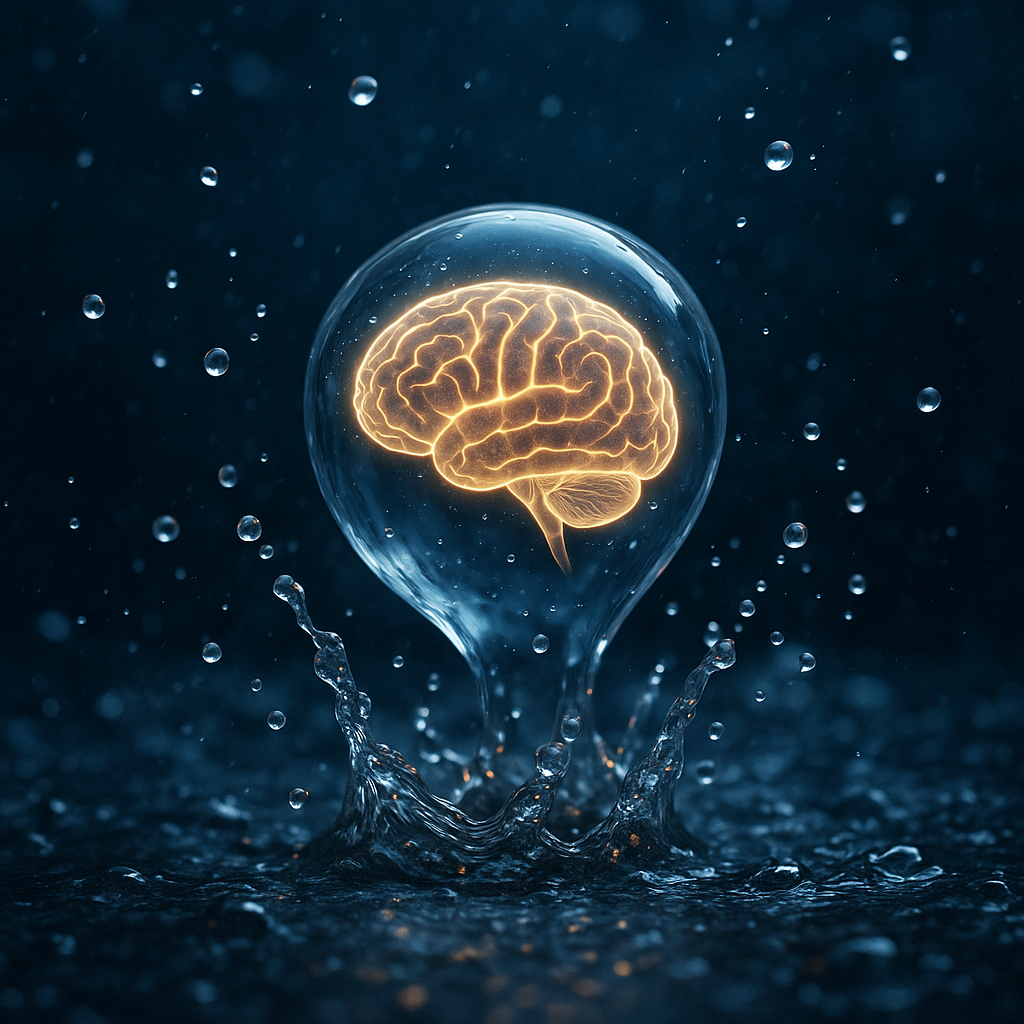Panpsychism: Consciousness Everywhere

Panpsychism is the view that consciousness might be in everything, from humans to atoms. It’s controversial—some see it as a promising explanation for consciousness, while others dismiss it as far-fetched. Interest is growing due to scientific and philosophical struggles to explain subjective experience.
Panpsychism is the idea that mind-like qualities are a fundamental feature of reality. This means that even things we usually see as lifeless—like rocks or electrons—might have basic forms of awareness. This awareness wouldn’t be human-like, but more rudimentary, more like a feeling of being. Panpsychism goes against the view that consciousness only emerges in complex brains, suggesting instead that it’s built into the fabric of existence.
The term panpsychism comes from the Greek “pan” (all) and “psyche” (soul or mind). It proposes that consciousness is not an emergent property, but a universal one, like mass or charge. It’s present at all levels of reality, not just in brains or animals. This makes it a radical alternative to physicalist or dualist worldviews.
Panpsychism is gaining attention because of the hard problem of consciousness: how do physical processes in the brain produce subjective experience? Materialism struggles to explain how firing neurons become sensations like red or pain. Panpsychism offers a workaround—it says we don’t need to create consciousness from scratch; it’s already everywhere.
Ancient thinkers such as Thales, Plato, Aristotle, and the Stoics believed in a cosmos full of soul or rational order. The first known use of the term ‘panpsychism’ appeared in 1591 in Francesco Patrizi’s book Nova de Universis Philosophia. In it, he introduced the term to describe a philosophical system where soul or mind was understood to pervade all of reality. This marked a shift from Aristotelian views and laid the groundwork for modern interpretations of a conscious cosmos. The Stoics called it the logos, the rational fire that pervades everything. In modern times, Leibniz’s monads, Spinoza’s dual-aspect substance, and Whitehead’s process philosophy further developed panpsychist views. Gustav Fechner and Josiah Royce leaned into a more cosmic, world-soul perspective. More recently, panpsychism has resurged due to dissatisfaction with materialism.
Panpsychism isn’t just one idea—it has several interpretations. Micropsychism claims that consciousness exists in the smallest units of matter like atoms or electrons. Cosmopsychism sees the universe itself as conscious, with individuals being fragments of that larger cosmic mind. Panexperientialism, a term introduced by Philip Goff, emphasizes that all matter has some form of experience, not necessarily thought. Panprotopsychism suggests that higher forms of consciousness are logically entailed by more basic, protophenomenal properties.
Proponents of panpsychism make several arguments. The continuity argument posits that consciousness likely didn’t emerge from nothing; it must have existed in rudimentary form from the beginning. The intrinsic nature argument says physics describes how things behave, not what they are, and perhaps the inner nature of matter is experiential. Evolutionary reasoning questions where in evolution consciousness would have suddenly appeared if it weren’t always there. Scientific echoes, such as those from Integrated Information Theory, imply that even simple systems could have minimal consciousness. Lastly, panpsychism provides a unified worldview that avoids dualism’s split and materialism’s explanatory gaps.
Proponents argue that panpsychism solves the hard problem of consciousness, integrates mind and matter without relying on dualism, and aligns with quantum mechanics.
In neuroscience, panpsychism complements ideas like Integrated Information Theory by supporting the idea that consciousness comes in degrees. In quantum physics, it resonates with interpretations that suggest observer-like properties are fundamental. In artificial intelligence, panpsychism implies that consciousness might be possible in non-biological systems, depending on how they’re structured and integrated.
This idea intersects with one of the most intense and perplexing frontiers of modern research: understanding whether machines can be conscious. The sheer complexity of defining, identifying, or even detecting machine consciousness has drawn massive interdisciplinary effort—from neuroscience and cognitive science to physics and philosophy. Institutions like the U.S. Department of Energy have joined this global inquiry. On May 29, 2025, the DOE posted on X acknowledging how AI could reshape our understanding of intelligence and reality itself.
AI is the next Manhattan Project, and THE UNITED STATES WILL WIN. 🇺🇸
— U.S. Department of Energy (@ENERGY) May 29, 2025
Such official recognition shows just how urgent and elusive the issue has become. While current AIs can simulate human-like conversation, reasoning, and creativity, whether these systems have any subjective experience remains unknown. Panpsychism, by suggesting that experience may exist in all forms of organized matter, opens the door to imagining how certain configurations of AI might eventually achieve not just functionality but awareness. Yet this very suggestion is deeply challenging, because it forces us to rethink long-held assumptions about what it means to have a mind—and whether mind might be more common in the universe than we ever thought possible.
Some spiritual or metaphysical traditions speak of “high vibration” and “low vibration” states, often associating them with emotions, mental clarity, or states of consciousness. While this language is not typically used in philosophical discussions of panpsychism, there is conceptual overlap. If all matter has a degree of consciousness, then variations in the “vibrational state” of that consciousness might reflect different qualities or tones of experience. A high-vibration state could represent coherent, harmonious consciousness, while a low-vibration state might reflect fragmentation or dull awareness. Though originating from separate traditions—one metaphysical, the other philosophical—they share the intuition that consciousness is not binary but comes in gradations, possibly influenced by the fundamental qualities of matter itself.
There is also an intriguing conceptual bridge between panpsychism and ideas about the power of water. In various esoteric and scientific discussions, water is thought to possess a kind of memory or responsiveness to intention, vibration, or environmental influences—claims popularized by figures like Masaru Emoto. If consciousness or experience exists in all matter, as panpsychism suggests, then water’s fluid and responsive nature could make it an especially expressive medium for these subtle consciousness-like effects.
A related area of growing interest is plant consciousness. Panpsychism provides a philosophical context for understanding how plants, though lacking brains, might still possess rudimentary forms of experience. Research has shown that plants can respond to stimuli, communicate through chemical signaling, and adapt behaviorally to their environment in sophisticated ways. While these responses are often attributed to mechanistic or biochemical processes, panpsychism allows for the possibility that such responsiveness reflects a basic, non-neural consciousness. This view doesn’t claim that plants think or feel as animals do, but rather that their awareness may emerge from the same universal field of experience that panpsychism attributes to all matter. In this way, plant consciousness could be seen not as a biological anomaly, but as a natural expression of consciousness in a different form.
Panpsychism might not have all the answers, but it opens up questions traditional materialism cannot. It offers a framework where mind is embedded in the world. Whether right or wrong, it encourages scientists and philosophers alike to rethink what consciousness is—and where it might reside.

